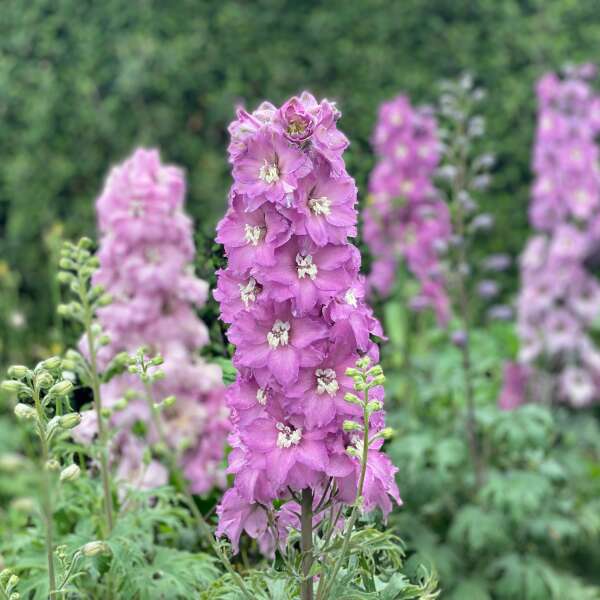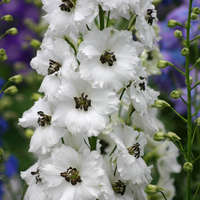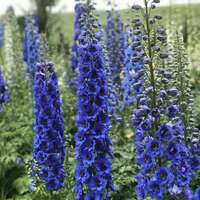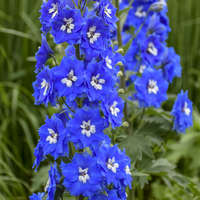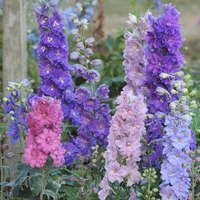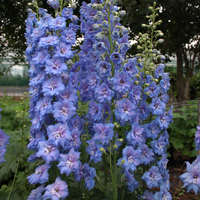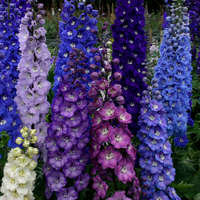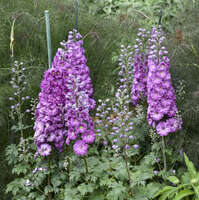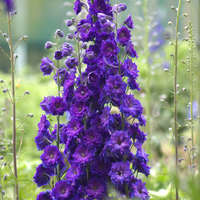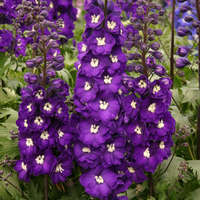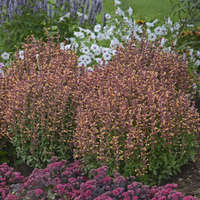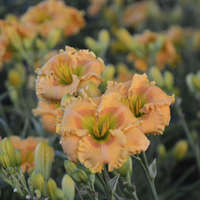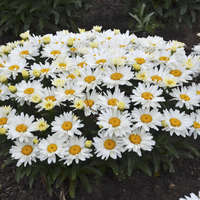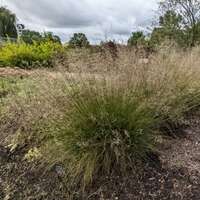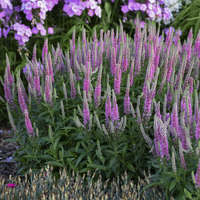Delphinium 'Mini Pinks'
New Zealand Delphiniums
Common Name: Hybrid Bee Delphinium
A pink color strain of the popular 'Mini Stars' mix from New Zealand Delphiniums. 'Mini Pinks' are selected for their shorter stature, sturdy stems, and bright pink colors. Their compact height helps them hold up longer without staking.
Delphinium are a classic garden perennial. These plants are excellent for adding height to small spaces. Their tall flower spikes are easily recognizable when they come into flower in summer. When in flower, the spikes of these plants become heavy and should be staked to avoid toppling over in rough weather, especially taller varieties. Newer hybrids are longer lived than some of the more traditional cultivars.
